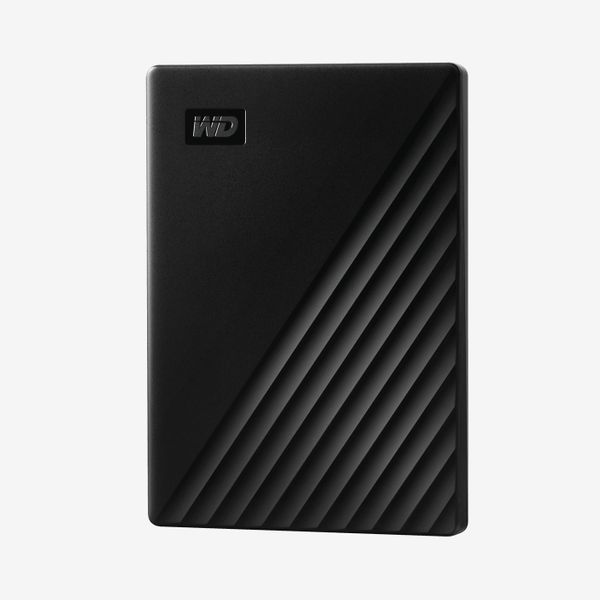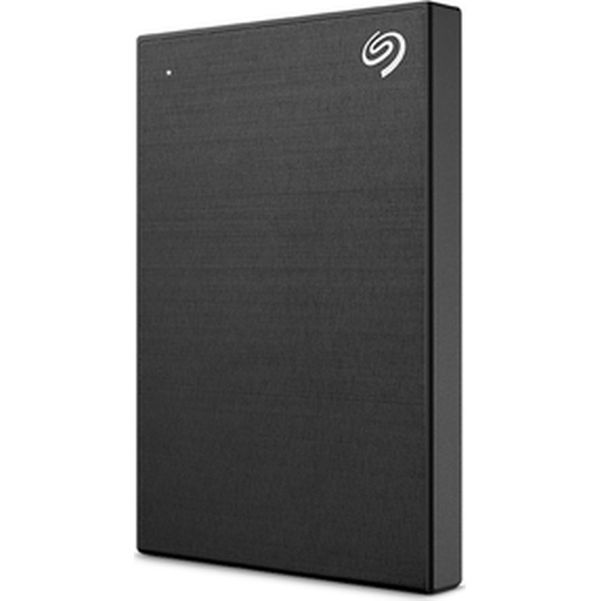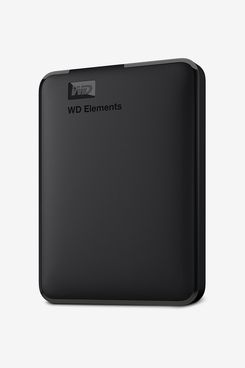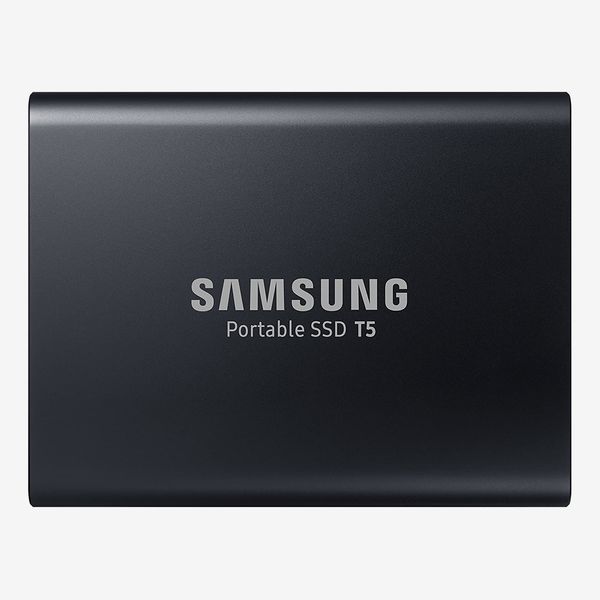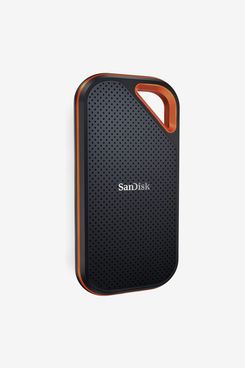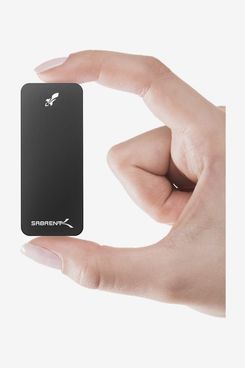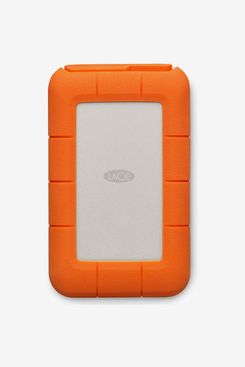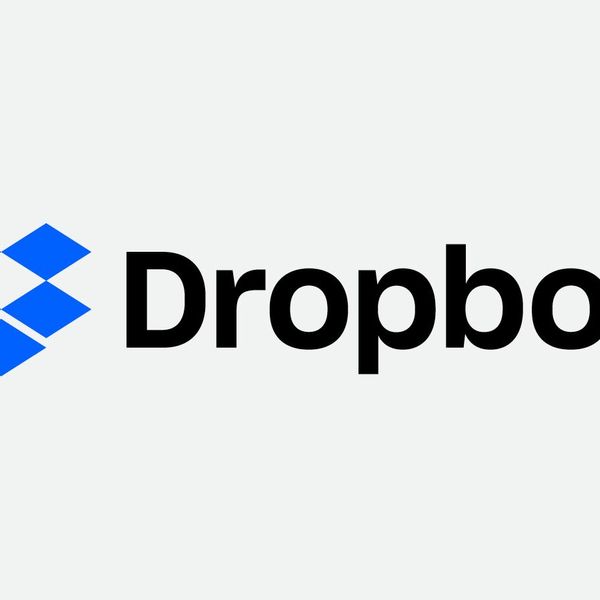
It is almost inevitable that at some point, your computer becomes a digital junk drawer, with huge folders for work projects, thousands of photographs, music files, and random apps and programmes you forgot that you’d even installed. Though a digital declutter can free up some room, it’s a good idea to incorporate an external hard drive to store backups, rarely accessed files, and to keep your computer health tip-top.
Knowing what you need in an external hard drive can be confusing: How many terabytes do you need? Do you need something fast and portable, or something durable and reliable? How much should you spend? So we’ve reached out to ten experts — from producers, videographers, academics, and programmers (of course) to help you identify exactly what you need. Read on to see which hard drives are the fastest, the most durable, and the best value for money.
A note: Most of the external hard drives below are compatible with Mac and Windows, but some may be exclusive to PCs only, in which case our experts advise that you reformat them to be compatible with Mac if necessary. Here’s a guide on how to do this. None of the below hard drives require power sources outside the USB connection to your computer.
Best overal external hard drive
Stephanie Bazeley, a programmer, has had this sturdy little drive for five years and has yet to experience any issues with it. This is a great option if you just need some more storage space and are looking for something affordable yet very reliable. “It’s a cheap model but it has the specs to make it worthwhile,” she says. “It has high-speed USB 3.2, and although data transfer rate isn’t high, it does for the purpose of backup. The drives are generally quiet too; they have rubber feet, interior foam to ensure snug drive fits, and rubber screws to stop mechanical vibration, and absorb shock if you drop it. It doesn’t often travel but when it does it’s small enough to fit into my bag without taking up much space!” Though she uses it for backups, she also uses it for personal photo storage and other projects — at 4TB, it has enough space for both. This drive is only compatible with Windows, so if you are a Mac user you will need to reformat the drive.
Stephanie also provided some insight into knowing what to look for when choosing a hard drive. “For hard disk drive external drives, a speed of between 100 MBps to 200 MBps for read and write is decent, since the main purpose of these is for backup and not access. For an SSD drive a decent read/write speed would start at about 500 MBps. These drives need the higher speed for instant access files or to launch programs from.” So if you only need an external hard drive for backups, look for the former, and if you want to work from your hard drive, look for the latter. If you want to know if you’re getting a good deal, she also provided this simple formula to figure it out: “For HDD externals you don’t want to pay more than 3p per Gigabyte of storage, as that’s pretty much the average industry pricing. For external SSD the price per GB would be around 15p.”
Best (less expensive) external hard drives
Vivek Santayana, a Ph.D. student at the University of Edinburgh, has relied on his Seagate Backup for ten years — since 2010 and the start of his academic career, and it’s still going strong. “I have used it to back up all my university work, as well as all of my photos from when I travel, my iTunes library. I access it every few months to back stuff up.” Though he has travelled with it in the past, he largely uses it as a static backup now. “What makes this better than other brands is the sheer longevity and reliability of it. I’ve had other external hard drives that have failed and died with much less strain. The build quality is solid. It is very quiet and absolutely solid.” His version is 250GB, and is quite outdated now, but the successor of this model is now available in 1TB, 2TB, and 4TB versions. It is compatible with both PC and Mac, but only comes with a USB 3.0 wire, so you may need to use an adapter if you have a newer Mac.
Denis Lobanov, a software engineer (and my brother), had a distinctly engineer-esque approach to choosing his favourite drive: finding the one that gives the most terabytes of storage for the price. As he uses drives solely for backups in the format of .tar files of his work (archived files, like .zip files), his main and only priority is to ensure he is getting the highest amount of storage for the lowest price. He has several WD Elements Portable Hard Drives with 4TB storage, which equals about £21.36 per terabyte of storage. This drive may not be the best option for you if you need quick and regular access to your files or if you travel a lot, but he is confident it is the best deal on the market. “My usage is just backing up my files, and then the drive sits around waiting; so the drives I use rarely develop problems. I’ve had this one for around two years with no issues.” This hard drive is formatted for Windows users specifically, so if you use a different operating system like Mac or Linux, you will need to reformat the drive, as Denis did with his. “Generally Linux will mount almost any file-system type by default, but I do always reformat my drives to add encryption.” Because the drives are affordable, Denis has developed a system of keeping file types on their own separate drives. “I will separate the data types — so I have a set of drives to back up my (personal) videos and photographs separately, just because of their size.”
Best portable external hard drives
Jake Miller, a music producer, relies on the Samsung Portable SSD whenever he is travelling. “It’s an SSD with USB 3.1, so the speeds are quite good and I can backup or transfer work in remote locations really quickly”. It’s also particularly sturdy and he hasn’t had issues with it despite his constant travel. “I’ve had zero issues with the drive, to the point I’m even able to sell it on for a decent amount of what I paid when I decide to upgrade. This is the first time I’ve been able to consider selling on a mechanical drive, they have almost always failed me within a year or two of being lugged around the world in suitcases because they’re much more fragile.” The hard drive is shock-resistant, so even if you drop it, it’ll carry steadily on, as Jake can attest.
Like all hard drives, you can format it to be compatible with either Mac, PC, or both, and it comes with USB Type-C to C cable and USB Type-C to A, so you can work seamlessly. Jake bought the 2TB version, which was sufficient for all his work, but it is also available with more storage (4TB), or less with either 250GB or 500GB.
Sam Stringer, a videographer, uses three 2TB SanDisk Extreme Portable Drives on rotation for his work. He finds it particularly useful that he can wear them around his neck on lanyards so he can have immediate access to them when necessary. “Its portability around the neck with a lanyard has been a perfect accompaniment when working with multiple clients,” he explains. “I now use three in weekly rotation, two for specific clients that I store on different lanyards, and one as a general daily burner, containing various creative elements, animation presets, and graphics.”
This is particularly useful for videographers who are bouncing around all day, he says. “Between the constant movement of shooting, editing, and storing video content, having the ability to produce social cutdowns on the fly is invaluable.” This hard drive is suitable for Mac and Windows users, and has high-speed transfers of up to 550MB/s, so IS particularly good for those who need to move video and hi-res images quickly.
Best Solid State Drive
Graham Austin, who works as a digital tech on photography sets, relies on this small but powerful drive when he’s working, particularly as it transfers files quickly. “This solid state drive is great for copying large amounts of files quickly to the photographer, art director, etc. at the end of a long day.” He owns multiples and says, “I travel with many of these drives at a time as they are just slightly larger than a pack of gum.”
This drive was a big upgrade for him in terms of speed, capacity, and price. “These drives are leaps and bounds above most traditional external hard drives as they are solid state and have no spinning disk inside,” he says. “This makes the drive five to ten times faster at copying data while also being smaller, quieter, more power efficient, and more durable.” The drive has a storage space of 1TB, is compatible with Mac and PC, and has a download speed of up to 1000MB/s.
Best most-resilient external hard drive
The Lacie Rugged Portable Hard Drive is somewhat of an icon in the creative fields, and its orange silicone casing is ever-present in all creative studios. It is no wonder that photographer, art director, and Adobe creative resident Christina Poku relies on it to back up her daily work and projects. She uses the 2TB version and the 5TB version. The orange padding is a key component for the resilience and the aesthetics. “They’re durable, portable and pretty lightweight. I also appreciate the size and added protection they have compared to other hard drives I’ve owned in the past. It means I don’t need to worry about taking it to another location or travelling with it if I have to. I love how they look too, orange is a bit of an accent colour in my studio so I like that it complements that too as an added bonus.”
Stephy Fung, a 3-D-motion graphics designer, agrees. “What I love about Lacie’s design is having the rubber exterior — it helps from buying hard drive cases and it’s great in case you accidentally drop it — other brands don’t have that. It does save you money, and I find most hard drive cases are not as ergonomic as the Lacie rubber exteriors.” Stephy predominantly uses her numerous hard drives to back up her work. “I use external hard drives for photos and videos. I predominantly work with A LOT of video files which get quite heavy, and I don’t want to load my desktop computer with unnecessary memory.” The Lacie hard drives are not the cheapest available but will be with you for years — they’re dust-, water-, and drop-shock resistant. They are compatible with Macs and PCs and can even be used interchangeably between the two if formatted correctly. It has a transfer speed of 130 MB/s.
Best external hard drive for team use
Casting directors Alex Cowburn and Roxanne Farahmand of Jinjo Casting prefer to use Dropbox, an online file-hosting service, in place of physical hard drives — this is a great option for anyone who needs to share and back up files quickly when working collaboratively. “The reason we use Dropbox is because it means we can both have all the projects that we are working on on both of our computers at the same time as we work collaboratively. It is also really handy, as the bulk of our work is producing decks [presentations] for clients and teams, and with Dropbox we can send these files to clients really easily.” Fiscally, it can be quite advantageous — £15 per month for a business subscription or £10 for a regular subscription, and countless minutes saved in not having to pass around a physical hard drive to share files. However, it does require internet access for use and the download/upload speeds are dependent on your own internet speeds. If you opt for the cheaper subscription, the storage limit is 5TB, but there is no limit with the business subscription.
The Strategist UK is designed to surface the most useful, expert recommendations for things to buy across the vast e-commerce landscape. Read about who we are and what we do here. Our editors update links when possible, but note that deals can expire and all prices are subject to change.
